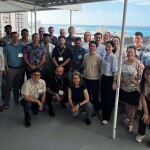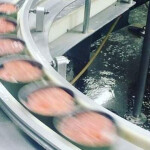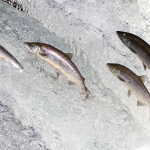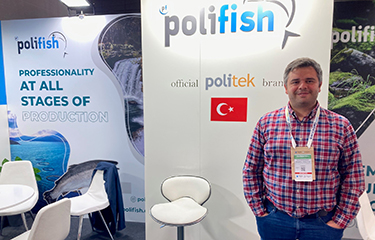Turkey’s trout production will zoom past 60,000 metric tons in 2023, and Trabzon, Turkey-based Polifish will account for 13 percent of that amount.
At the 2023 Seafood Expo Global in Barcelona, Spain, Polifish General Manager Tayfun Denizer said the company will hit 8,000 metric tons of production this year thanks to advances in aquaculture best practices and support from the Turkish government.
“Turkey is making big moves. Now, the Norwegians and the Chileans [are] bigger than us, but Turkey will be really up there [as] one of the biggest trout producers maybe in two years,” Denizer told SeafoodSource.
A huge advance for the sector was the Turkish government’s decision in 2018 to allow domestic, sea-grown steelhead trout to be sold as “Turkish salmon.”
“Before, some people had no awareness of Turkish trout, but they see ‘salmon’ and they’re interested. At this show, they're coming and seeing us, doing tastings,” Denizer said. “We use the Latin names so people know what it is if they care. But trout [or] salmon, we don’t care as long as people buy it.”
Polifish and the 20 or so other Turkish trout-farming firms operating in the Black Sea have improved their farming processes in recent years. Denizer said his company has received assistance from his Japanese customers, who have sent technicians for months-long visits, imparting knowledge on everything from color improvement to quality control.
“We made a mistake in growing too fast without having good methods, but now Turkey has increased the quality a lot. The last two or three years, there was some complaints about quality or color. But now it's very good – we learned how to do it [better]. It was the maturity problems, making sure [it was the] right time to be putting [trout] in the sea. We learned a lot from the Japanese,” he said.
Today, Polifish buys eggs from Poland, France, and the U.S. firm Troutlodge and then raises them in hatcheries until they reach 2 grams in size. Then, the company transfers the smolt to dammed freshwater enclosures, where they grow to between 300 and 700 grams. Finally, the company places them in sea cages in November or December and harvest them in May and June before the water gets too hot. The process from egg to harvest takes between 18 and 20 months, Denizer said.
Polifish had USD 58 million (EUR 53.8 million) in sales in 2022, around 15 percent of Turkey’s total trout export value of about USD 375 million (EUR 348 million). Denizer said he hopes to reach USD 100 million (EUR 92.8 million) in 2023 or 2024, and he expects Turkish trout volumes will expand to somewhere between USD 500 million and USD 550 million (EUR 464 million to EUR 510 million) within the next two years.
“New companies are coming in and existing ones [are] increasing volumes,” he said. “There’s competition but we work together to help each other out.”
Most of Turkey’s trout exports head to Japan and Russia, with big gains seen in the latter market after numerous other countries ceased trading with Russia following its invasion of Ukraine.
“The Russians now [have] almost stopped buying from many countries. But Turkey and Russia [have] good relations, so we are improving exports there,” Denizer said.
Also helping with that effort is Turkey’s ability to send trout by truck to Russia through Georgia and Azerbaijan with a two- or three-day delivery time.
Turkish trout sells for USD 8.00 to USD 8.50 (EUR 7.42 to EUR 7.89) per kilo, roughly on par with Chilean product and cheaper than the USD 10.50 to USD 11.00 (EUR 9.75 to EUR 10.21) Norwegian producers receive.
“That allows us to compete in China, Russia, Japan,” Denizer said. “The one producer we can’t compete with is Norway. They are in their own market, producing 1.5 to 2 million tons a year.”
Trout prices are currently high, as they generally follow Atlantic salmon prices, which have skyrocketed in recent months. Even with those price levels, European demand is growing, and Turkish trout is now being flown fresh weekly to Canada, Hong Kong, and Vietnam, helping boost Polifish’s bottom line, Denizer said.
“Right now, Norwegian salmon prices [are] extremely high, so the customers who buy salmon are trying to find new alternatives,” he said.
Still, current economic worries and unfavorable global currency exchange rates are producing ...
Photo by Cliff White/SeafoodSource








